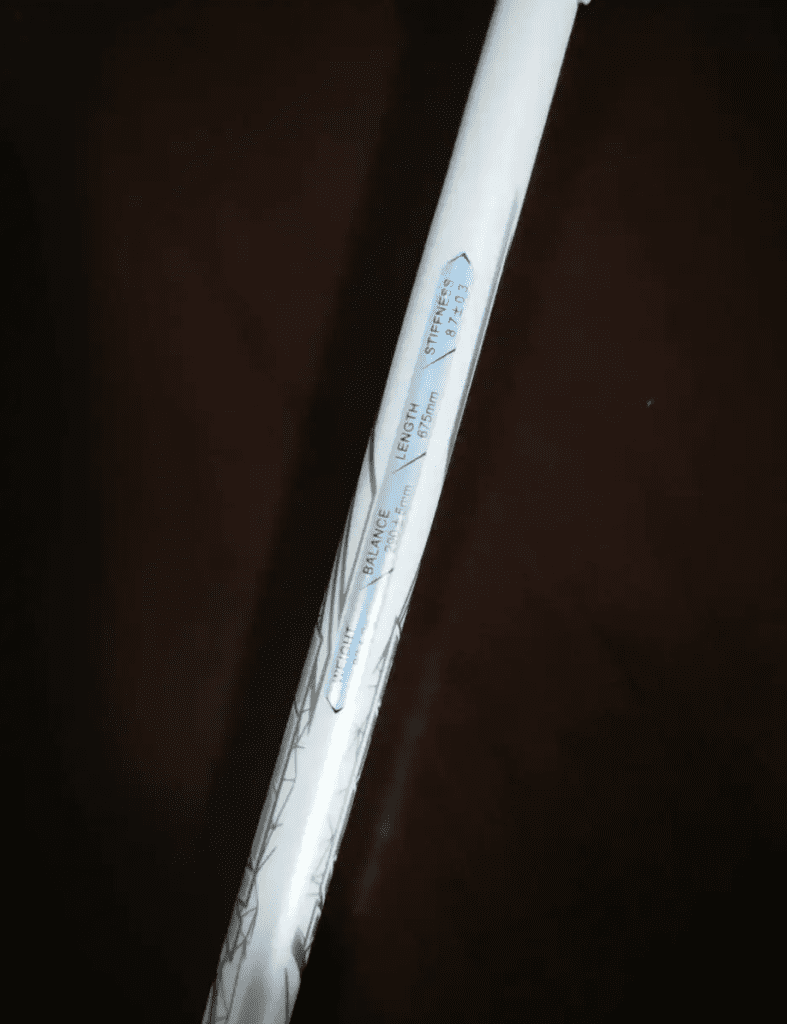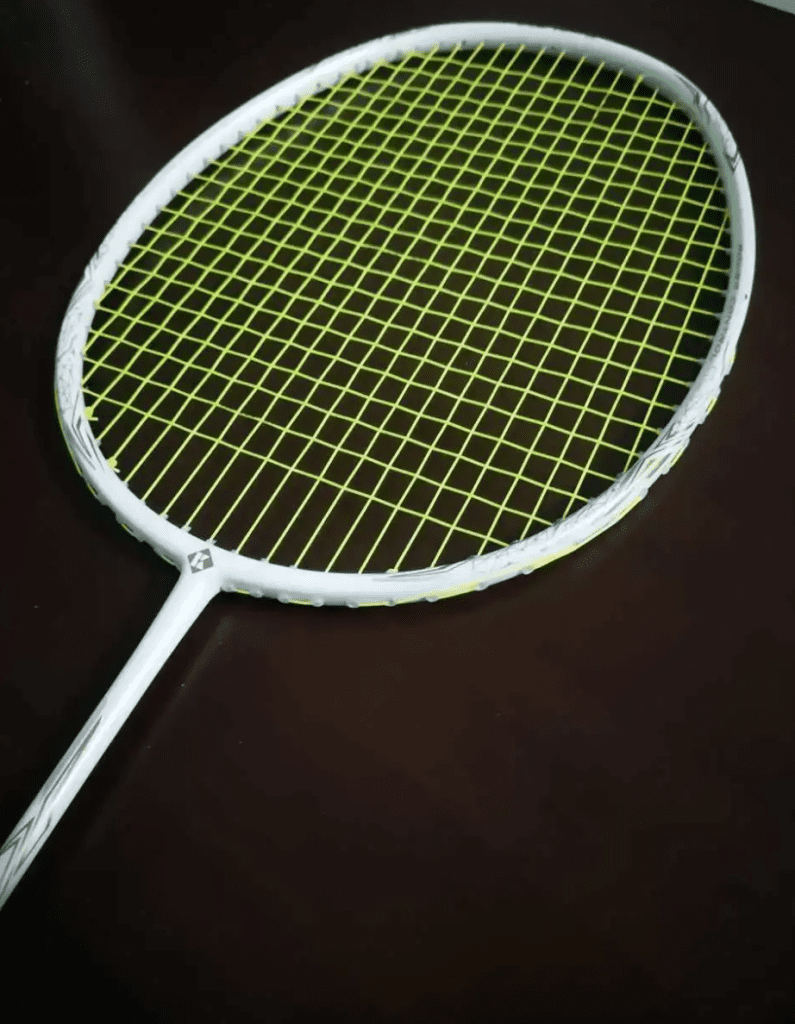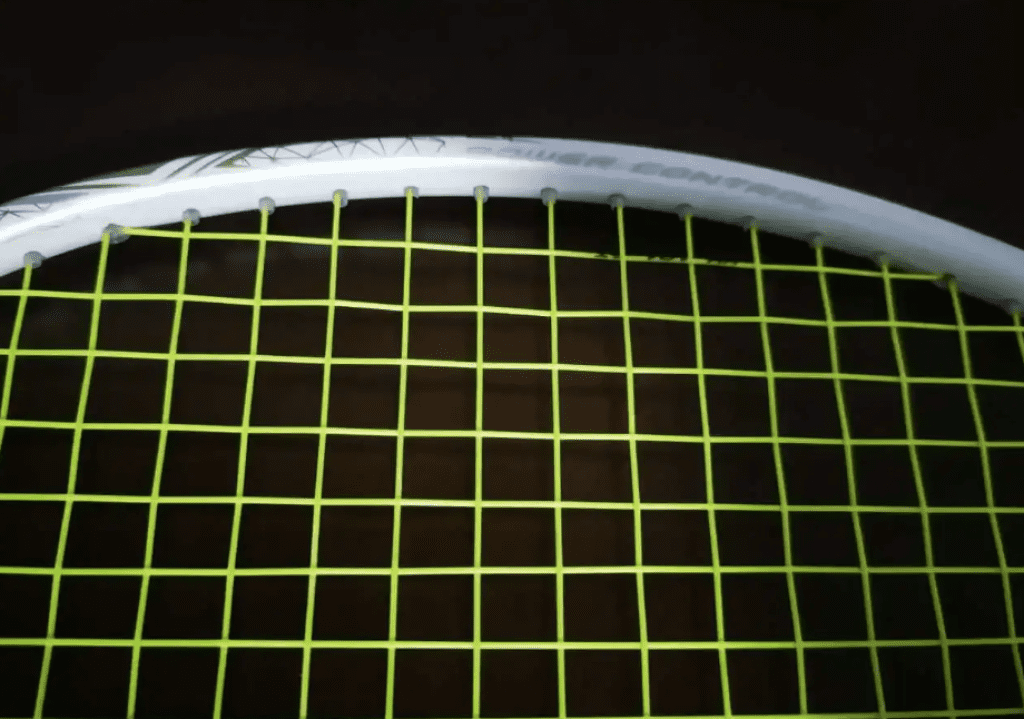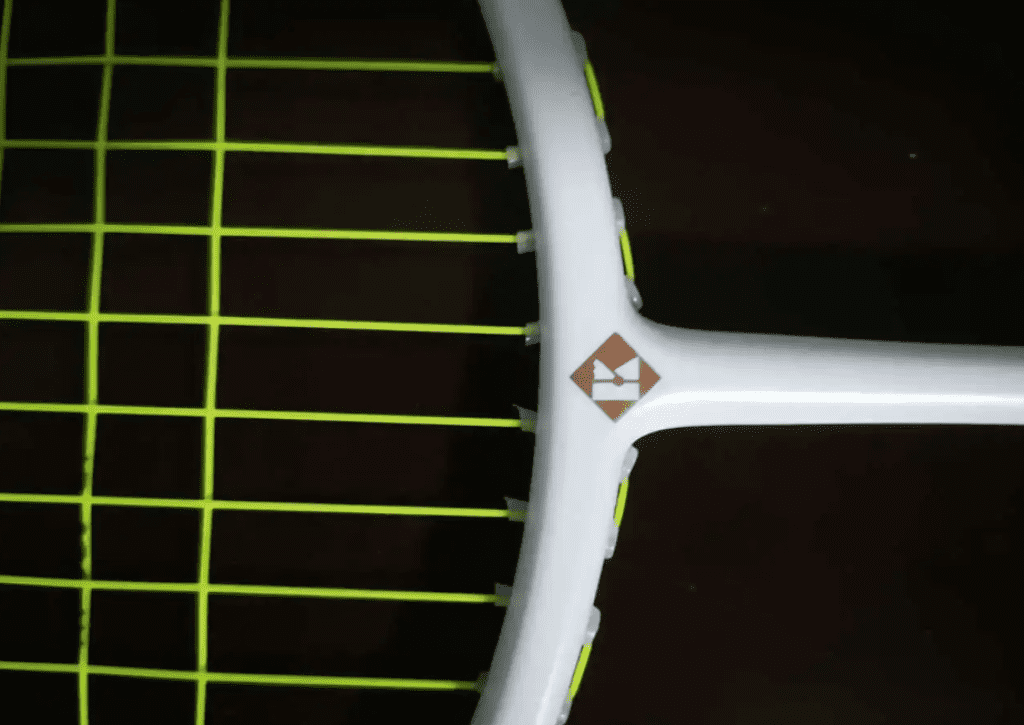I had to wait quite a while to get my hands on this racket. Occasionally, some players on the forum with very limited budgets ask for purchase advice, so I also pay attention to these less appealing rackets to challenge myself. This is the second racket in the “what more can you ask for with 100 RMB” series, the Kumpoo K520. I must say, it retains its value much better in the second-hand market compared to the previous Kason B110.

Specifications:
4U G5, total weight with bottom grip and string is 94g, balance point at 284mm, shaft length 215mm, soft-tuned with 9-3 point string grooves, standard T-joint transition to a box-shaped fluid frame, strung with 24 lbs using YONEX 101GT.

In terms of aesthetics, I really like both color options of the K520, especially the white version—white covers all flaws, and even newbie girls can use it. The overall design is clean with only some gold lines and patterns as decoration. Although it looks a bit flashy up close, it appears quite pure from a distance. Compared to the equally white Yonex Arcsaber 11 Pro, it doesn’t feel as plastic.
Despite the 284mm balance point, the swing doesn’t feel as sharp and nimble as rackets like the Yonex 9001 and HX800 Ltd C. This makes me question the mysterious relationship between balance point and swing weight. However, compared to the pure box-shaped 3U B110 from the competitor, the K520 still has a slight edge in swing speed, even though the former has a narrower frame (horizontally). That said, there’s still a somewhat plastic feel, which relates to the quality and stiffness of the shaft.

Due to string tension loss, the racket doesn’t release the shuttle as easily when clearing or returning defensive shots. However, the shaft is easy to handle, and the balanced design makes the power delivery process relatively smooth. I believe that with a fresh string job, the K520 will perform better. At least during warm-ups and extended rallies, this low-end racket with a long soft shaft allows less skilled users to keep rallying without tiring out quickly. However, the control over placement is quite vague—both in terms of angle and distance, it’s below the B110 and comparable to super-light rackets.

I was surprised that a racket with such a low balance point could still provide some downward pressure during smashes. There is feedback from the string bed when hitting the shuttle, and you can see the shuttle flying along a low trajectory after a smash. Although the smash speed is greatly affected by the string tension loss and the shaft’s lack of stiffness, making it hard to kill the rally, at least you feel like you’re attacking. The shaft’s upper limit is low; it can’t even meet the basic explosive power needed for flat drives, but the low entry threshold allows beginners to easily sense the power transfer when the shaft flexes.

The large frame, large sweet spot, and slightly softer feel are also beneficial for delicate shots. While it can’t apply enough pressure on the opponent from the backcourt or during attacks, and lacks speed in flat exchanges, the K520 can still put some pressure on the opponent at the net with its maneuverability. During rallies, some obvious mid-to-backcourt opportunities, combined with deceptive slice drops, can surprise opponents with the shuttle’s unexpectedly slow drop, causing psychological pressure. Since the racket’s offensive quality is low, this kind of sneaky playstyle actually suits the K520 until the opponent figures out the trick… which usually takes just a few rallies.
Instead of focusing on elasticity, I highly recommend using strings with good tension retention on this racket, especially since users at this price point are likely concerned about restringing costs. The inherent instability of this racket will be further amplified by tension loss. During my testing, I quickly figured out the proper way to use this racket, but when executing delicate shots, I still had to add a bit more power to avoid hitting the net.

Lately, I’ve come across quite a few versatile rackets, so trying out an entry-level racket like this is a nice change of pace. Kumpoo has been criticized for various reasons, including quality control and marketing tactics, but I suspect a large part of it is that their competitive products don’t align with the forum’s main audience. Kumpoo’s training and ultra-lightweight rackets still have some play value. Since they haven’t given up on developing rackets that most amateur players need, I’m willing to be more patient with them.
To sum up, the K520, as an entry-level product, is still playable at the lowest price point. It’s more suited for lending to others, casual games with newbies, as a training racket to help beginners develop proper technique and sense power, or for laid-back games with minimal competition. Of course, the retail price is absurd (“elderly subway phone”), so interested players might want to check out the second-hand market, where there’s usually plenty of stock. What more can you ask for with 100 RMB? It’s already decent.

Leave a Reply